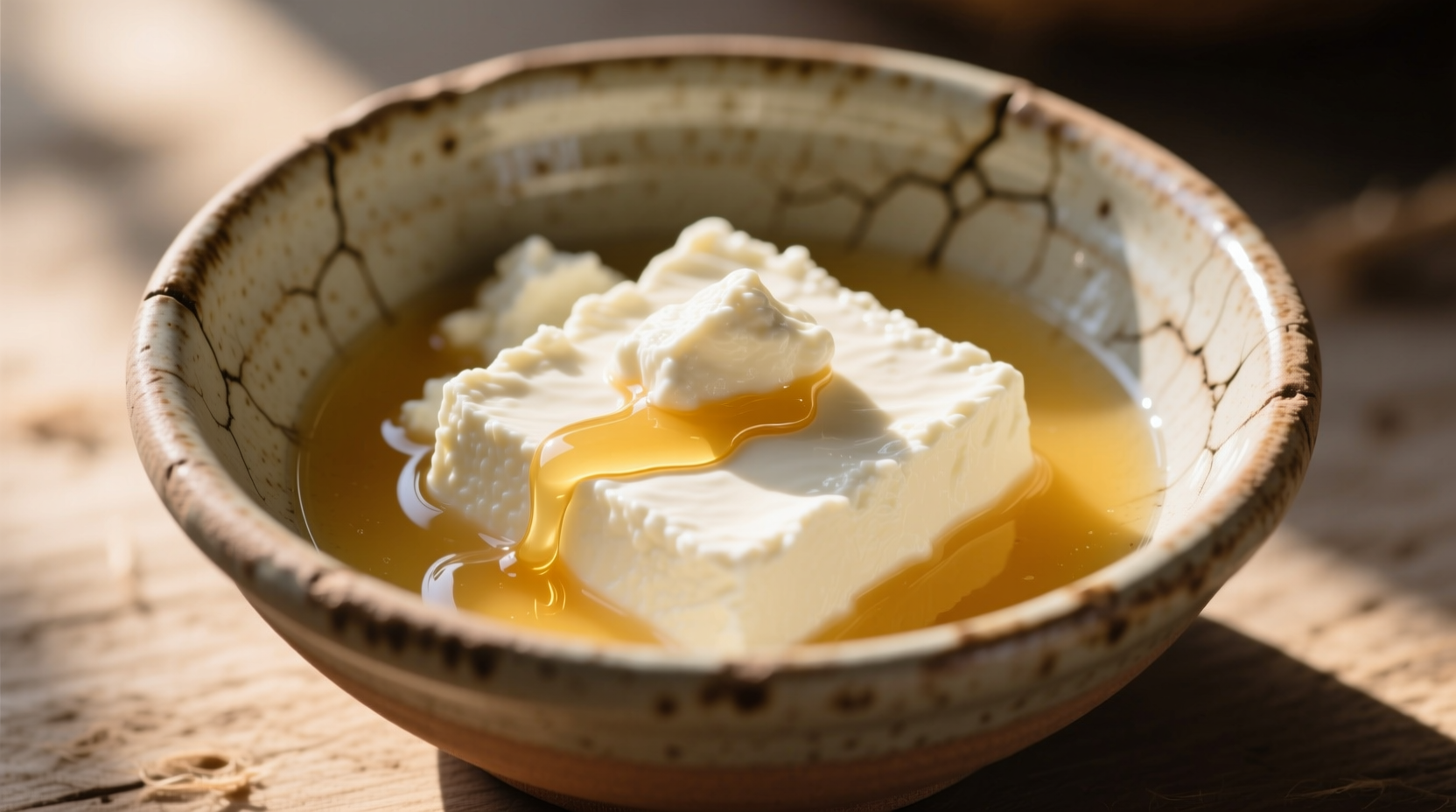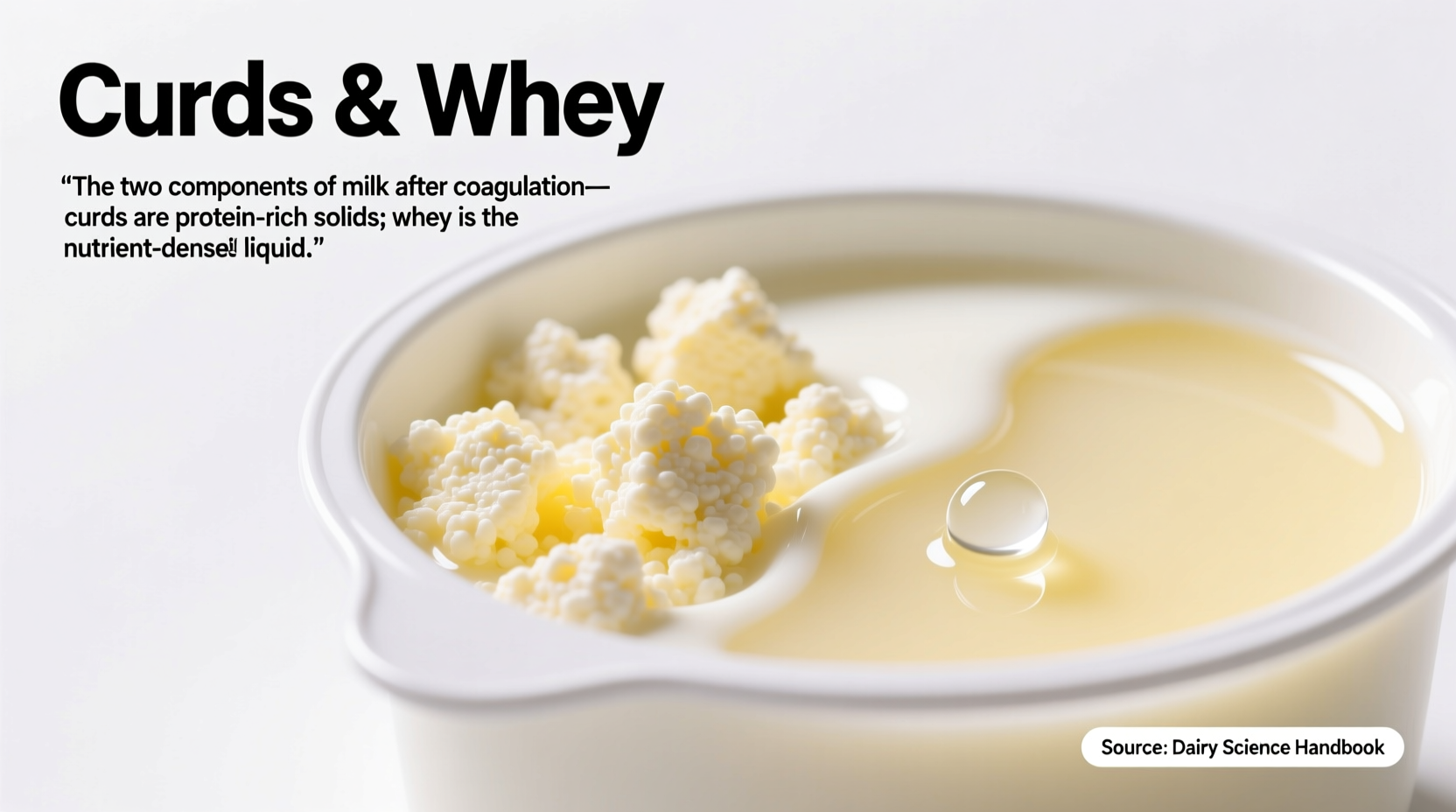Curds and whey are the two primary components formed when milk undergoes coagulation. Curds represent the solid protein and fat clumps (primarily casein), while whey is the nutrient-rich liquid remaining after separation. This natural dairy process forms the foundation of cheese production and has been utilized for thousands of years across global cuisines.
Ever wondered what exactly Little Miss Muffet was eating in that famous nursery rhyme? You're not alone. Understanding curds and whey unlocks a fascinating world of dairy science, culinary tradition, and nutritional benefits that extends far beyond that childhood verse. Whether you're exploring traditional cheese-making, seeking protein-rich foods, or simply curious about this age-old food combination, you'll discover practical knowledge you can apply immediately.
The Science Behind Curds and Whey Formation
When milk sours naturally or undergoes controlled coagulation, it separates into two distinct components through a process called curdling. This transformation occurs when the pH level drops (becomes more acidic) or when enzymes like rennet are introduced.
The solid portion—curds—consists primarily of casein protein (about 80% of milk's protein) along with fat and some minerals. These curds form when casein molecules, normally suspended in milk, clump together into a semi-solid mass. The liquid portion—whey—contains water, lactose (milk sugar), soluble proteins (like lactalbumin and lactoglobulin), vitamins, and minerals.
| Component | Primary Contents | Nutritional Significance |
|---|---|---|
| Curds | Casein protein, fat, calcium, phosphorus | High-quality complete protein, essential for muscle maintenance |
| Whey | Whey protein, lactose, water-soluble vitamins | Rapidly absorbed protein, supports immune function |
Historical Context: From Ancient Practice to Nursery Rhyme
The separation of curds and whey represents one of humanity's earliest food preservation techniques, dating back at least 8,000 years according to archaeological evidence. Ancient civilizations discovered that allowing milk to sour naturally created a longer-lasting food product with different textures and flavors.
The famous nursery rhyme "Little Miss Muffet" (first published around 1805) references curds and whey as a common food item in 16th-18th century Europe. During this period, before modern refrigeration, fresh milk would quickly sour, naturally separating into these two components that people consumed daily.
Modern Production Process
Today, curd and whey separation occurs through two primary methods:
- Acid Coagulation: Adding acids like lemon juice or vinegar to warm milk (common in paneer and queso fresco production)
- Enzymatic Coagulation: Using rennet (containing the enzyme chymosin) to create a firmer curd (essential for aged cheeses)
The process begins with fresh milk heated to specific temperatures depending on the desired product. After coagulation, cheesemakers cut the curd into uniform pieces, cook them to expel more whey, then drain and process them further based on the cheese variety being created.

Nutritional Profile and Health Benefits
Both components offer distinct nutritional advantages. According to USDA FoodData Central, a 100g serving of fresh curds contains approximately 15g of protein, 5g of fat, and significant calcium and phosphorus. Whey protein, now widely recognized for its muscle-building properties, contains all nine essential amino acids in proportions that make it a complete protein source.
Research from the University of Illinois Dairy Science Department indicates that traditionally fermented dairy products like cultured curds offer enhanced digestibility for many lactose-intolerant individuals, as beneficial bacteria consume much of the lactose during fermentation.
Global Culinary Applications
Cultures worldwide have developed unique ways to utilize both curds and whey:
- Eastern Europe: Quark (a fresh dairy product made from curds) features prominently in German and Polish cooking
- South Asia: Paneer (an acid-coagulated cheese) forms the basis of many Indian dishes
- Scandinavia: Traditional whey-based beverages like Swedish västerbottensost and Icelandic mjólk
- Middle East: Labneh (strained yogurt) represents another cultured dairy product using similar principles
Practical Uses in Home Cooking
You don't need specialized equipment to work with curds and whey. Here are practical applications for home cooks:
- Use fresh curds as a ricotta substitute in lasagna or stuffed shells
- Add whey to bread dough for enhanced rise and flavor complexity
- Strain whey through cheesecloth to create a protein-rich cooking liquid for soups and stews
- Ferment whey further to create probiotic-rich beverages
When making cheese at home, temperature control proves critical. The University of Wisconsin-Madison Extension notes that maintaining milk at 86-90°F (30-32°C) creates optimal conditions for bacterial cultures to work effectively without damaging the developing curd structure.
Common Misconceptions Clarified
Several myths surround curds and whey that deserve clarification:
- Myth: Curds and whey refer to specific cheese varieties
Reality: They describe the separated components that form the basis of many cheeses - Myth: Whey is merely a waste product
Reality: Traditional cultures valued whey highly for beverages, cooking, and animal feed - Myth: All curds taste sour
Reality: Flavor depends on culture type, aging time, and processing methods
Environmental and Economic Considerations
Modern cheese production generates significant whey as a byproduct. Historically viewed as waste, innovative approaches now utilize whey for:
- Animal feed (particularly for pigs)
- Production of whey protein concentrates
- Biofuel generation through anaerobic digestion
- Soil amendment in sustainable agriculture practices
The Food and Agriculture Organization reports that approximately 90% of global whey production now gets utilized rather than discarded, representing significant progress in sustainable dairy processing.
Bringing It All Together
Understanding curds and whey connects us to ancient food traditions while providing practical knowledge for modern kitchens. Whether you're interested in homemade cheese, maximizing nutritional benefits, or simply understanding that nursery rhyme reference, this fundamental dairy process offers rich possibilities for exploration. By recognizing both components as valuable food resources rather than one being merely a byproduct, we honor centuries of culinary wisdom while applying it to contemporary cooking and nutrition.











 浙公网安备
33010002000092号
浙公网安备
33010002000092号 浙B2-20120091-4
浙B2-20120091-4